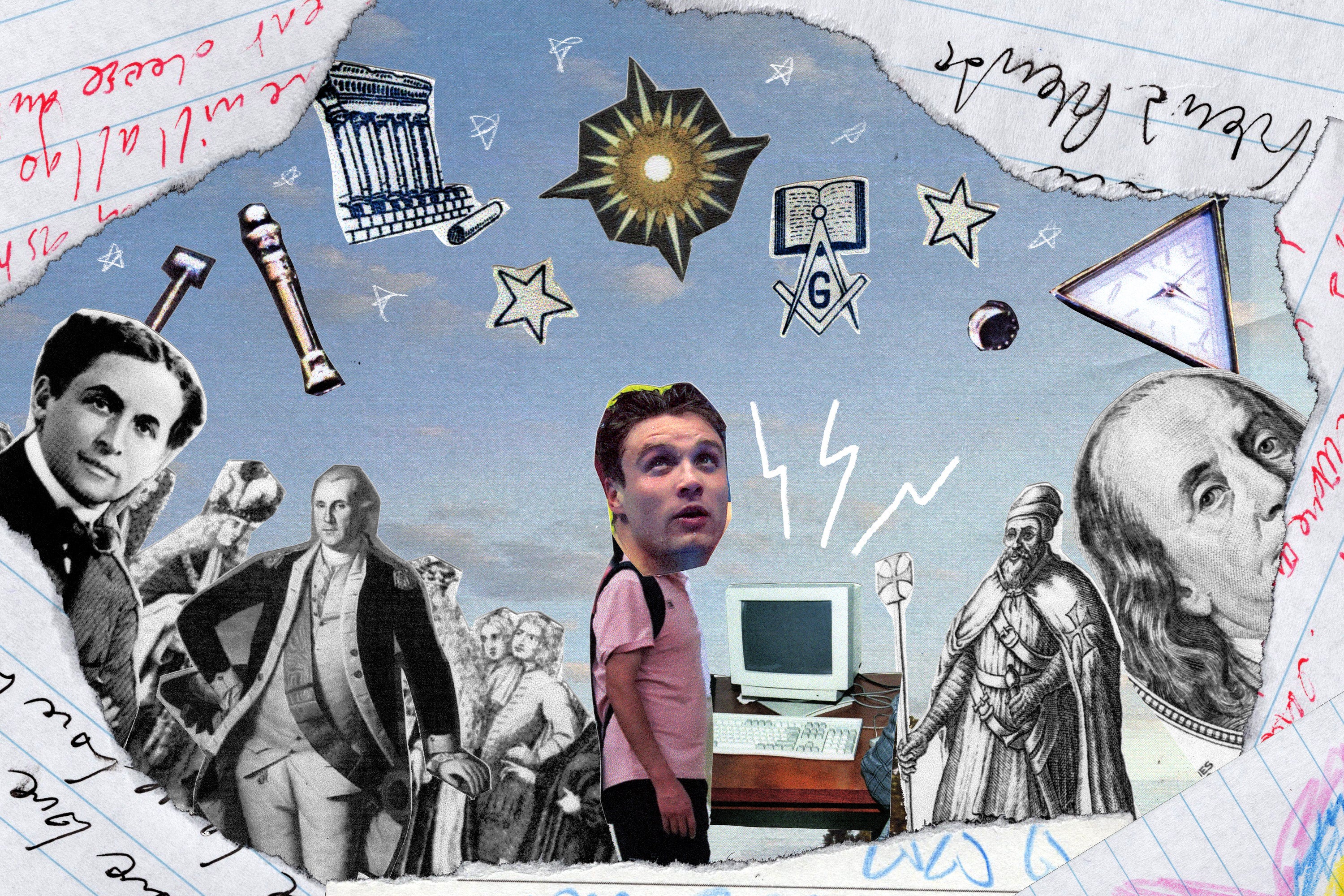Understanding the Steps of How to Become a Freemason with Confidence
Understanding the Steps of How to Become a Freemason with Confidence
Blog Article
Exploring the Mysteries of the Freemason: What You Required to Know
The Freemason, a term usually shrouded in intrigue and debate, represents a complicated tapestry of historic reality and modern misconception. Developed in the late 18th century, this secret culture was at first rooted in the Enlightenment's perfects however has because come to be identified with conspiracy theory theories concerning elite control. As we browse the beginnings, vital numbers, and the raw comparison in between myth and truth, one must take into consideration how these narratives influence modern assumptions of power and secrecy. What might be disclosed through a better evaluation of these elements might challenge long-held presumptions concerning the shadows that remain in our culture.
Beginnings of the Freemason
The origins of the Freemason are soaked in a blend of historical intrigue and ideological eagerness. Developed in 1776 in Ingolstadt, Bavaria, by Adam Weishaupt, the team was at first created as a secret society focused on promoting Knowledge perfects such as reason, secularism, and the splitting up of church and state. Weishaupt, a teacher of canon legislation, looked for to test the prevailing authority of the church and state, which he saw as oppressive organizations stifling intellectual and individual freedom.
The Freemason sought to recruit prominent members from various social fields, consisting of politics, academic community, and the arts, to promote a network dedicated to these Knowledge concepts. The culture run under a veil of privacy, employing coded language and rituals to safeguard its participants from persecution, especially given the repressive climate of the moment. The Freemason encountered significant opposition from both governmental authorities and religious establishments, which saw the team as a threat to their power.
Key Numbers and Members
That were the essential figures that shaped the Freemason's very early impact and instructions? The Bavarian Freemason, established in 1776 by Adam Weishaupt, arised as a response to the oppressive societal structures of the moment. how to become a freemason. Weishaupt, a law professor, envisioned the organization as a way to promote Enlightenment perfects such as reason, secularism, and equal rights. His initial recruitment efforts consisted of influential pundits, such as Baron von Knigge, that played a critical duty in expanding the team's subscription and business framework.
One more considerable figure was Johann Gottlieb Fichte, a popular philosopher whose concepts on nationalism and education reverberated with the Freemason's objectives. Although Fichte was not an official participant, his thoughtful underpinnings influenced the group's ideology. In addition, numbers like the writer and philosopher Johann Wolfgang von Goethe were connected with the wider intellectual movements of the moment, although their direct participation with the Freemason stays discussed.
These crucial figures added to the Freemason's early direction, pressing the boundaries of political and social thought, while their collective efforts intended to challenge well established norms and foster a climate of modern modification in Europe.
Myths vs. Fact
Many misconceptions surround the Freemason, commonly blending truth with fiction in a method that covers its true nature. The concept that the Freemason continues to put in substantial influence over world occasions is a misconception - how to become a freemason.
Another prevalent misconception is that the Freemason makes up a network of elite individuals adjusting worldwide events. In reality, numerous conspiracy concepts exaggerate the team's importance, associating unproven objectives to social fads and events. This has resulted in an oversimplified view of complicated issues.

Modern Interpretations
Contemporary analyses of the Freemason commonly reflect wider social anxiousness and a fascination with privacy and power. This contemporary lens regularly connects the Freemason with conspiracy theories that suggest a covert elite orchestrates globe occasions, adjusting governments and economic climates for their very own gain. Such stories use an ingrained wonder about of authority, particularly in times of crisis or social upheaval.

Furthermore, some modern interpretations frame the Freemason as a metaphor for the intricacies of globalization and the interconnectedness of significant individuals and companies. This point of view urges a crucial assessment of just More hints how power dynamics run in today's world, highlighting the balance between openness and secrecy in administration and corporate methods.
Social Impact and Heritage
Influenced by centuries of intrigue, the social effect and tradition of the Freemason prolong far past its historical beginnings. This secret society, developed in the late 18th century, has actually penetrated different elements of prominent society, from literature and film to music and art. The idea of the Freemason has actually developed right into a symbol of conspiracy theories, frequently standing for a viewed concealed power controling worldwide occasions.
In literature, writers like Dan Brown have actually woven the Freemason into elaborate plots, exciting visitors with styles of privacy and power. Movies such as "National Treasure" and "The Da Vinci Code" additionally perpetuate the attraction of the society, blending truth with fiction to develop interesting narratives.
The Freemason's influence additionally expands right into songs, with musicians referencing the organization to evoke motifs of disobedience and societal review. This portrayal has actually added to an attraction with the concept of clandestine groups managing the bars of power, reflecting societal stress and anxieties regarding authority and openness.
Inevitably, the Freemason's legacy is a complicated tapestry of misconception and reality, forming assumptions of secrecy and control in contemporary discussion. Its long-lasting existence in society emphasizes mankind's perennial mission for comprehending concealed realities.
Final Thought
The exploration of the Freemason reveals an intricate interplay between historic truths and modern-day myth-making. Established in the Enlightenment era, this culture intended to challenge oppressive structures, yet its heritage has been outweighed by conspiracy concepts that recommend elite control. Comprehending the distinctions between the initial explanation ideals and contemporary analyses is crucial for understanding the withstanding attraction with the Freemason and its significant influence on social narratives bordering power and privacy in culture.
Report this page